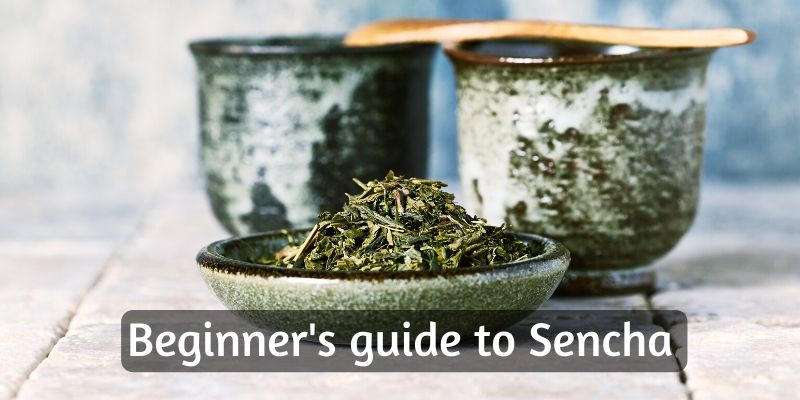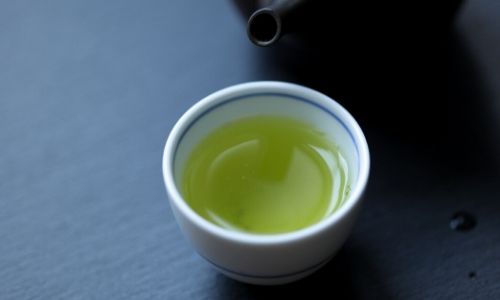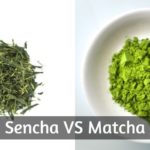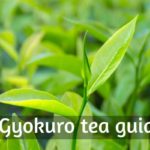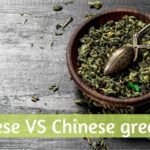If you're a green tea fan then you've definitely heard of Sencha. It's the Japanese green tea that's got everyone hooked, and it's a little more affordable than Matcha.
So, Sencha. This is going to be a beginner's guide, and cover most of the questions you'd have when you first find this tea.
Now let's start with the most obvious, and important question... what is it ?
Table of Contents
What is Sencha ?
Sencha is a type of sun grown Japanese green tea. It uses the Camellia sinensis tea plant, like most other teas.
This tea is at times shaded, but mostly sun grown.
Also, it's never an oxidized tea. Not even a little, as you'll notice when we discuss the production of Sencha.
It's the most popular green tea in Japan, and one of the most common types of green tea you'll find on the market, when looking for a Japanese green tea.
You'll notice that Sencha is different from most other green teas around the world, because it's processed in the Japanese fashion. This means the leaves are heat treated with steam, instead of firing them or baking in an oven (Chinese method).
This results in a better tasting green tea, and a definitely green brew color.
There's two types of Sencha available, and here they are:
Asamushi
Asamushi Sencha is the lighter, more delicate version. It's steamed for less time than its counterpart, and this results in a very pale, light green brew color.
The leaves themselves are still delicate, and the flavor is light as well.
This of it as kind of a white tea, in terms of how delicate and light it is.
Fukamushi
Fukamushi Sencha is the most common version. It's steamed for longer than Asamushi, and the leaves develop a dark, bright green color.
The resulting brew is also a bolder green shade, and the flavor of the tea is more vegetal and pronounced than Asamushi.
Is Sencha different from Matcha ?
Yes, Sencha is very different from Matcha.
First, Sencha tea leaves are grown in the sun, while Matcha leaves are grown in the shade.
Then, Sencha is a full leaf tea, while Matcha is a powdered green tea.
Another difference is that Sencha is infused, and you only drink the liquid. Matcha powder is mixed into the hot water, and you ingest the powder as well.
And finally, the flavor difference is immense. Where Matcha is flavorful, umami-like, and slightly sweet the Sencha is more seaweed-like, and has a definite green taste, a bit bitter at times.
What does Sencha taste like ?
Each Sencha is a little different from the other, depending on the batch and the year and general growing conditions.
But generally, Sencha has a deep, green flavor - almost vegetal. Some say it's a bit like seaweed, but not in a bad way. Think of the seaweed used in sushi.
It's definitely not for everyone, and especially so because there is no sugar added to this tea. None at all.
How is Sencha made ?
Sencha has a very straight-forward process. Today we'll be covering how it's made, from harvest to packaging.
You'll note that the process is very similar to regular green tea, except there is no oxidation involved, and the heat treatment is very, very different.
1. Sun grown tea leaves are harvested
For most cases, the leaves used for Sencha are sun grown. This means that the tea plants are grown like any other crop, out under the open sky.
The plants are always on steep terrain, places in terraces or in some way the side of a high hill or mountain slope.
Elevation is important, and you'll often find tea farms on high slopes.
Each winter, the tea plants undergo a process like hibernation. Once springtime rolls around, the plants become active again and start to produce new growth.
This growth is harvested starting mid-spring, such as April. This is the first harvest, and it's always been noted that it's the best in terms of flavor.
There is also a different Sencha name for the first harvest - Shincha, or Ichibancha - meaning 'first tea'.
When harvesting the tea leaves, only the youngest and most delicate ones are harvested.
Once picked, they're sent to be steamed and further processed.
After the first harvest, the leaves will grow back as the plant continues to grow. This prompts the second harvest 2-4 weeks after the first. It's a bit lower in quality, but still good.
And so on until the last harvest, which us usually the 4th. As autumn rolls around, the leaves change flavor dramatically and aren't really great for green tea.
2. Leaves are steamed instead of pan-fired
Once the leaves have been harvested, they're brought in to be steamed.
The oxidation step, which is customary for the Chinese process, is skipped here.
Steaming the leaves is a relatively short process, and it ensures the leaves do not oxidize after being processed.
This helps them keep their flavor, and makes sure you get the best product possible.
So, after steaming, the leaves are sent to be rolled into their final shapes, and then left to dry.
3. Rolling, shaping, drying
Once the leaves are fully steamed, they will need to be rolled.
This can be done either by hand or by a machine, but the end result is the same.
A lightly rolled, cylindrical tea leaf that's going to be left to dry out and preserve its shape.
During the rolling and shaping process some leaves may get broken, but this is not an issue. Most of the time, the leaves remain intact and large enough.
However, this means that when brewing Sencha you'll need to give it plenty, plenty of room to unfurl as the leaves are larger than other green teas.
How do you brew Sencha ?
Alright, we now know what Sencha is, how it's made, and now we need to know how to brew a cup.
Despite being green tea, it's not as easy to brew as you might think.
There are a few extra steps we need to take, if we really want to enjoy this green tea the way it's meant to be.
This means that to brew a damn good cup of Sencha, you'll need both the tea (the best you can find), and the tools.
You will need a dedicated tea set
A dedicated tea set might seem like a lot for just one type of tea, but really it's useful for most (if not all) Japanese green teas.
They have a wholly different way of going about brewing green tea, especially compared to the Western style.
Amounts of water and Sencha for 4 people is 2 grams/1 whole teaspoon per person, and as much water as each cup can hold.
Most cups hold 4-5 oz/120-150 ml of water. The teapot itself should be able to hold enough water for all the cups in the set.
If you're looking for a recommendation, then this ceramic Japanese tea set is going to help you out.
It's perfect for Brewing Sencha - small-ish cups, a good, large filer to keep the tea leaves, and a good lid to keep the heat inside the teapot.
The total volume of the teapot is 20 oz/591 ml, and it has 4 cups. Meaning that each cup can hold about 5 full oz/150 ml of brewed tea.
It comes in several colors, and all variants are painted with the Japanese lucky cat motif.
You can find the Amazon link for this ceramic tea set right here, and check the reviews as well.
1. Pre-heat the teaware
The first step is to boil the water, bringing it to 100 C/212 F. This is important, because the whole process of brewing Sencha relies on the water cooling down for s specific amount of time, in order to get to 80 C/176 F.
If you're wondering why you can't just use water that's already 80 C/176 F, it's because the teaware needs to be hot, before we even begin brewing.
Both the teapot and the cups need to be hot, so as to not change the tea's flavor.
It's also possible that this was the ancient way of brewing Sencha, and it's become the traditional way, like other tea customs.
So, boil your water. Make sure to measure out how much water fits into each cup, and how many cups you're serving.
Keep in mind that the leaves can be steeped again.
Once the water is boiled, pour it into the empty tea cups. Fill each cup up to about 80% capacity. Let all cups of water sit for exactly 2 minutes.
Then, pour the slightly cooled water into the empty teapot.
This will both heat the teapot and also cool the water a little bit more.
2. Add tea leaves
Once the teapot's been filled with as much water as you need, add the tea leaves.
Measure out 2 grams/1 teaspoon of Sencha for each person/cup.
It might seem like a lot, but keep in mind that you'll steep them again, with another round of water.
Also, Sencha is meant to be enjoyed like the Chinese Gong Fu - steeping for a short amount of time, then repeating the process.
3. Steep 1 minute, serve
Once you've added the tea leaves, cover the teapot and steep for one full minute. Use a timer for this, since it matters a whole lot.
After the minute has passed, you can pour out the tea into the empty cups.
They should be still warm, and the tea should have a nice green hue to it. Depending on what kind of Sencha you're using, it might be a lighter or deeper green.
Once you're done serving into cups, make sure there is no water left in the teapot. This can further extract the tea leaves, and we don't want that.
Place the teapot's lid back on, but leave it ajar. This way the tea leaves will cool down, and won't be extracted by the remaining steam.
4. Re-steep if you like
When re-steeping you should add just as much water as before, but you won't need another round of Sencha leaves.
Also, make sure to add 30 seconds to the full minute of steeping.
Meaning that you will again need to boil water, pour it into empty cups, wait for it 2 minutes, then add the water to the teapot and let it steep for 1 minute and 30 seconds.
The same process is repeated for the third steep, only now it will be 2 minutes instead of 1 minute and a half.
Western style brewing will yield a poor result
If you're wondering if you could use a regular teapot for this, the answer is no.
Heat transfer and difference in flavor are the main factors here.
Using a regular teapot, which is thicker and has no filter, will alter the water temperature in a way you can't foresee.
There will be a a marked difference in flavor when deviating from the traditional method, and it would be a shame to ruin such a nice tea.
What you could do is use a glass jar/pot, and use a strainer. That's the closest you can get to the traditional method, in terms of heat transfer and flavor.
Final words
Sencha and its brewing method are really a beautiful thing. There's a lot of tradition behind this beautiful green tea, and there's really a lot to admire about it.
The whole process of drinking Sencha is more of a ceremony than a casual thing.
I hops this post helped you better understand Sencha and it's delicate features.
If you want to know more about coffee or tea, feel free to check the related articles below. Who knows what else you might find ?

